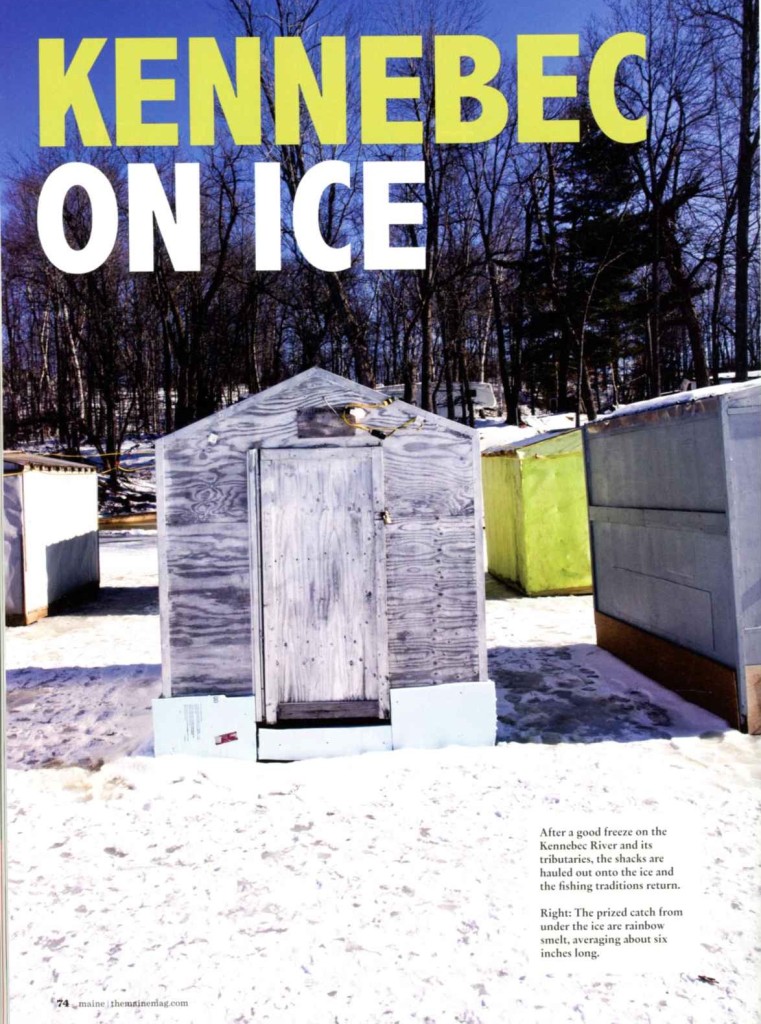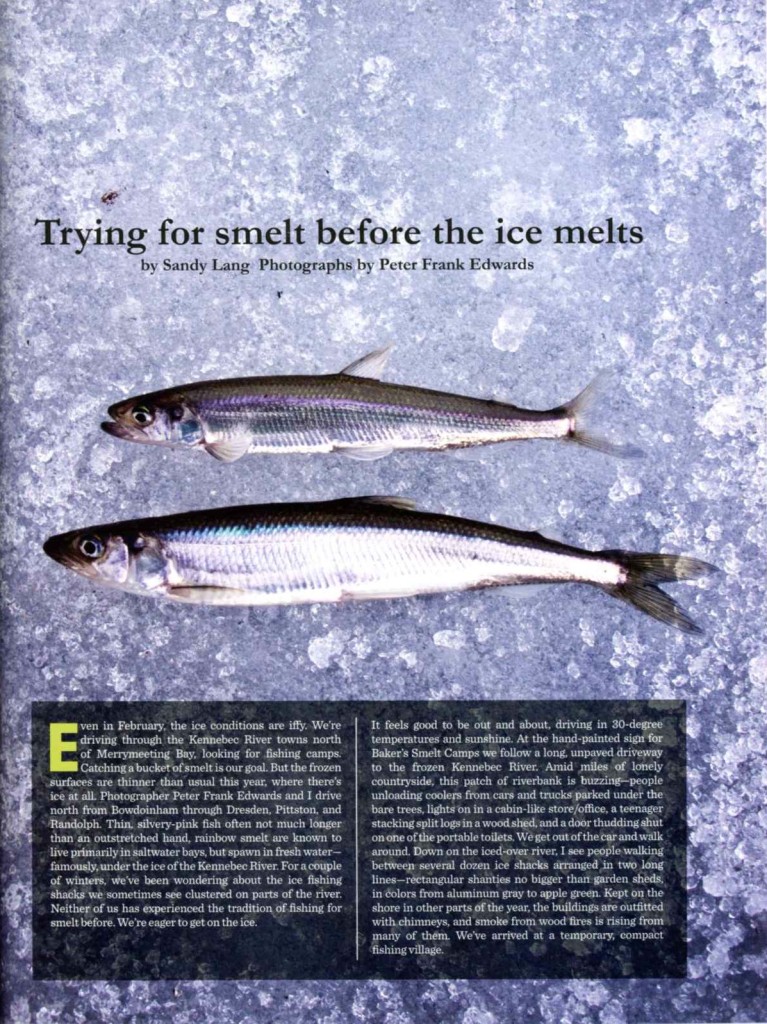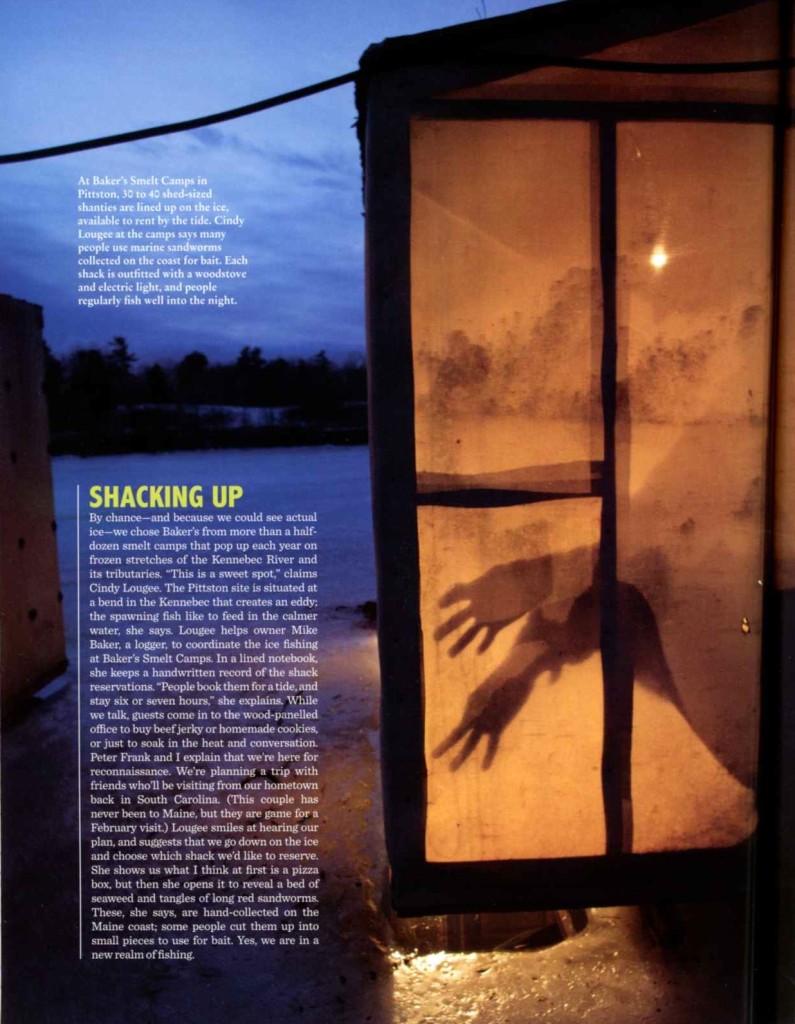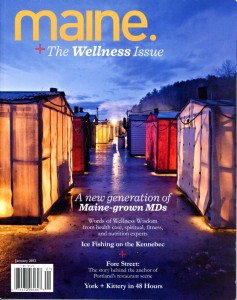Took off for February adventure with PFE for our latest feature for Maine magazine. Thank you to friends from South Carolina who came along, and to everyone we met in the shacks and on the ice at Baker’s Smelt Camps.
The full story runs six pages in the Jan. 2013 issue. Excerpts from the fish tales:

KENNEBEC ON ICE. Trying for smelt before the ice melts.
Even in February, the ice conditions are iffy. We’re driving through the Kennebec River towns north of Merrymeeting Bay, looking for fishing camps. Catching a bucket of smelt is our goal. But the frozen surfaces are thinner than usual this year, where there’s ice at all. Photographer Peter Frank Edwards and I drive north from Bowdoinham through Dresden, Pittston, and Randolph. Thin, silvery-pink fish often not much longer than an outstretched hand, rainbow smelt are known to live primarily in saltwater bays, but spawn in fresh water—famously, under the ice of the Kennebec River.
By chance—and because we could see actual ice—we choose Baker’s from more than a half-dozen smelt camps that pop up each year on frozen stretches of the Kennebec River and its tributaries. “This is a sweet spot,” claims Cindy Lougee. The Pittston site is situated at a bend in the Kennebec that creates an eddy; the spawning fish like to feed in the calmer water, she says. Lougee helps owner Mike Baker, a logger, to coordinate the ice fishing at Baker’s Smelt Camps. In a lined notebook, she keeps a handwritten record of the shack reservations. “People book them for a tide, and stay six or seven hours,” she explains. While we talk, guests come in to the wood-paneled office to buy beef jerky or homemade cookies, or just to soak in the heat and conversation. Lougee suggests we go down on the ice and choose which shack we’d like to reserve. She shows us what I think at first is a pizza box, but then she opens it to reveal a bed of seaweed and tangles of long red sandworms. These, she says, are hand-collected on the Maine coast; some people cut them up into small pieces to use for bait.


To get to the ice, we descend the bank and step onto a narrow wooden boardwalk. The surface is slushy on either side of the planks, but no one seems concerned. I can hear several radios playing from different shacks. We peek inside a few that are empty and see similar layouts inside of each: a plank floor down the center, a woodstove at the rear, and a trough of open water along the length of each side, where the ice has been cut.
A few of the teenagers who work at the camp, delivering firewood and keeping things tidy, catch up with us. One of the young laborers, Steve Potter, is pulling a load of firewood on a sled and says his job on the frozen river has its odd moments. He says, “Earlier, I saw a four-wheeler go by on the river pulling a La-Z-Boy with a guy strapped to the seat for the ride.” Two other workers, Airyn Jewett and Katie Baker, are both from Gardiner. They say they’ve been coming to the camps for years, and that their fathers helped to clear the snow for an ice-skating oval a few yards from the shacks. The teenagers tell us most people hang bait lines from a horizontal post, but they’ve had good luck catching fish on handheld “jigger” poles with a short, heavy line, using the poles to jiggle bait in the water and then hook the fish. It doesn’t look like there’s room inside the shacks for jiggling or much of anything else, but I’m told some of the structures can hold up to six people who are actively fishing. We reserve number 35, a smaller shack with a decent-looking woodstove…
– Sandy Lang, February 2013 (images by Peter Frank Edwards)
